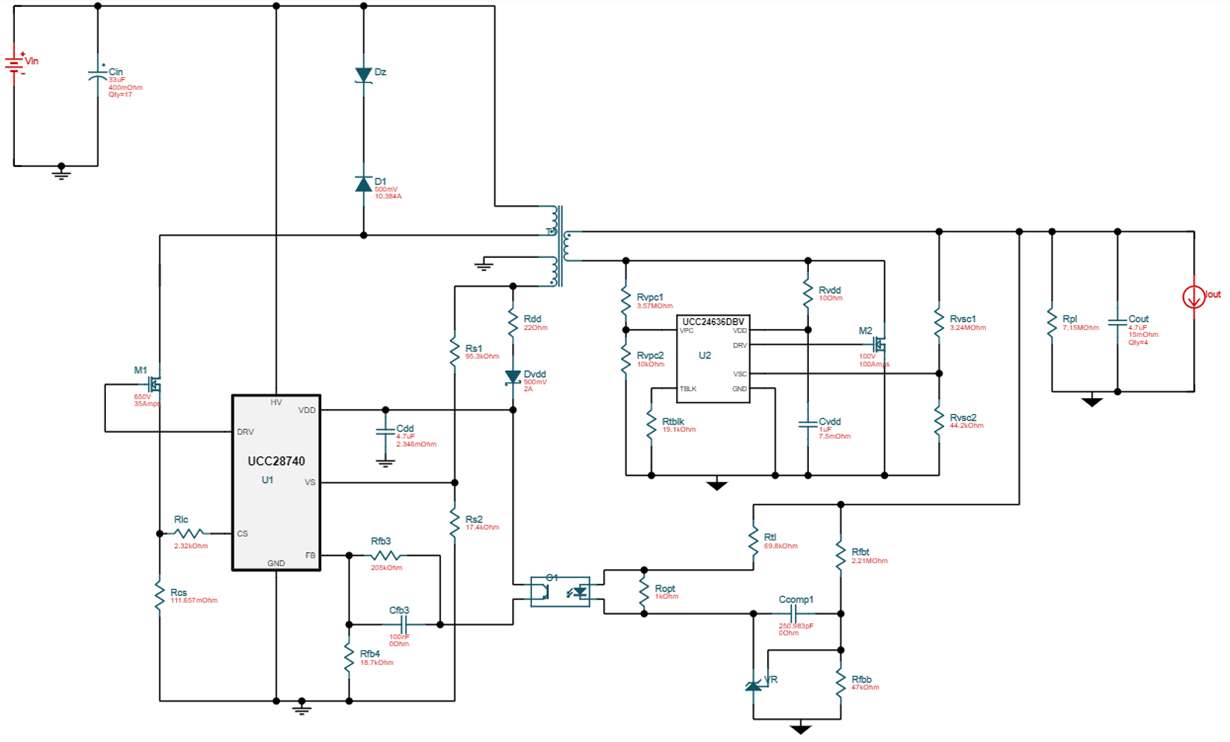Other Parts Discussed in Thread: UCC28740, TL431
Dear officer,
I am writing to ask one question about a UCC24636 application in a flyback convert.
When I plug in 80-160VDC in, 120V 1A out into WEBENCH, it provides me this circuit.
Basically, it is a flyback converter. Transformer turns ratios are as below:
Primary : secondary = 15 : 20,
Aux : Secondary = 4 : 20.
However, I have noticed that it suggested using UCC24636 in the secondary and a 100V MOSFET M2 with it.
My question is
1. VDD of UCC24636 has a max rating of 30V according to datasheet. Can we really use it here?
2. Can we use MOSFET M2 here since it has only 100V = VDS-max. ? I think the max voltage across it would be Vout(120V) + Winding voltage (164V).
Can anyone help on this?
thanks,
JIM.



